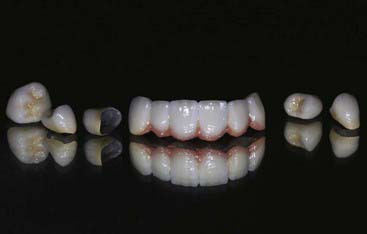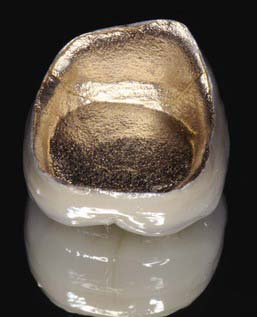Chapter 20 Ceramics
Porcelain-Fused-to-Metal Restorations
Relevance of Porcelain-Fused-to-Metal Restorations to Esthetic Dentistry
Porcelain-fused-to-metal restorations provide the opportunity to restore damaged, nonfunctional teeth to proper function and esthetics (Figure 20-1). These restorations have been among the most popular and most heavily used restorations in dentistry over the last 50 years. Porcelain-fused-to-metal restorations have a long history of clinical success and provide the opportunity to give patients an esthetic option to rehabilitate damaged teeth. Any tooth can be restored with porcelain fused to metal.
Clinical Considerations
Indications
Any time teeth have been damaged by trauma, decay, or tooth fracture and/or heavily restored, those teeth are structurally compromised (Figure 20-2). These are good candidates for porcelain-fused-to-metal restorations. In addition, patients who have high esthetic demands or requirements may be treated with a porcelain-fused-to-metal restoration. This choice allows the dentist to create a restoration that can visually restore the tooth to its proper esthetics.
Material Options
Metals
The semi-precious metals contain high percentages of gold, platinum, and palladium, all of which are even more biocompatible (Figure 20-3). These metals also tend to have a slightly better fit and even the potential for the margins to be burnished, which provides an enhanced clinical result.
Porcelains and Ceramics
Many different types of porcelain can be used. The industry standard for years has been the use of stacked porcelains, where a powder and liquid are mixed together on top of the metal to provide the final esthetic result (Figure 20-4).
Stay updated, free dental videos. Join our Telegram channel

VIDEdental - Online dental courses






